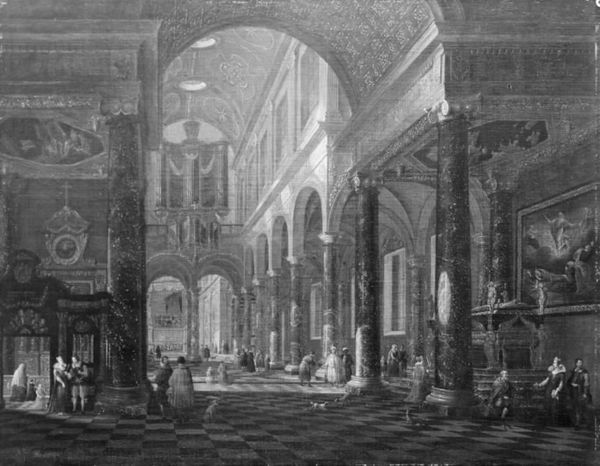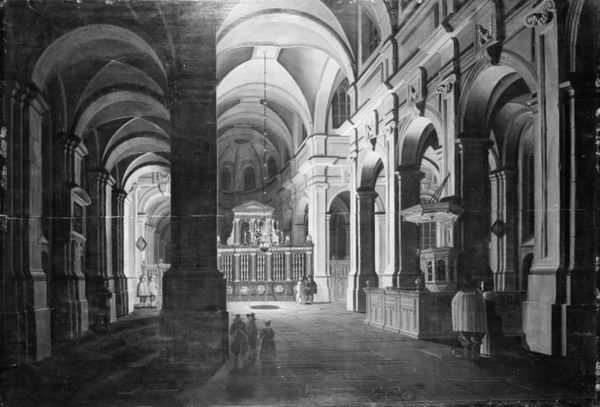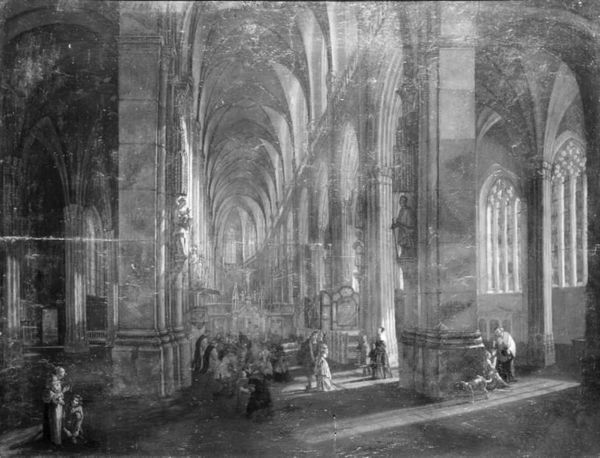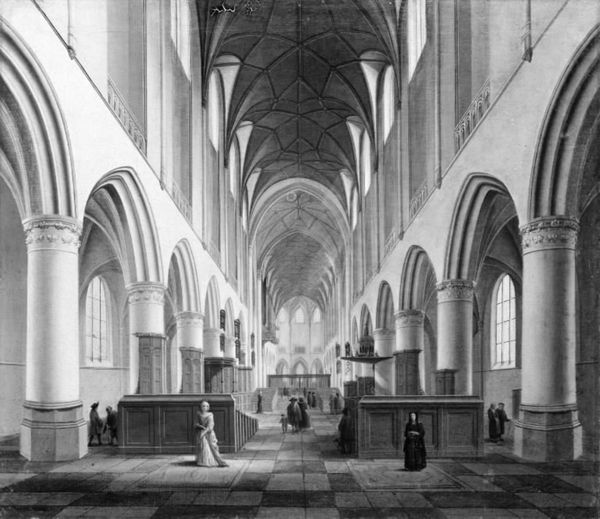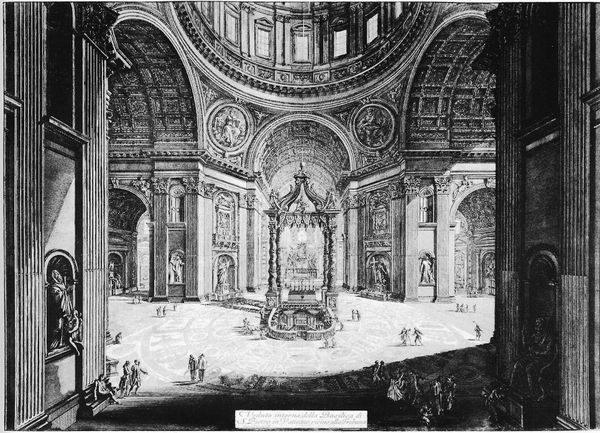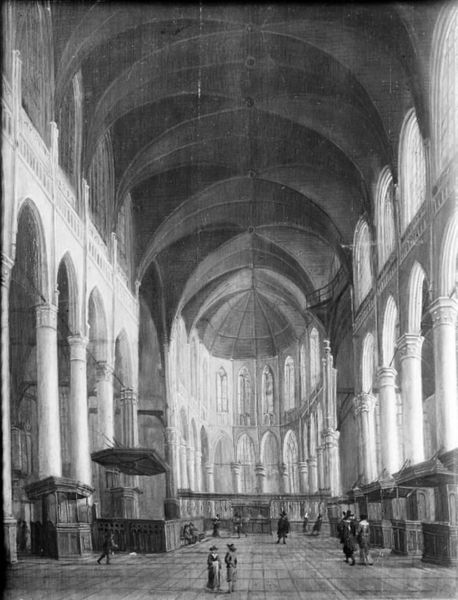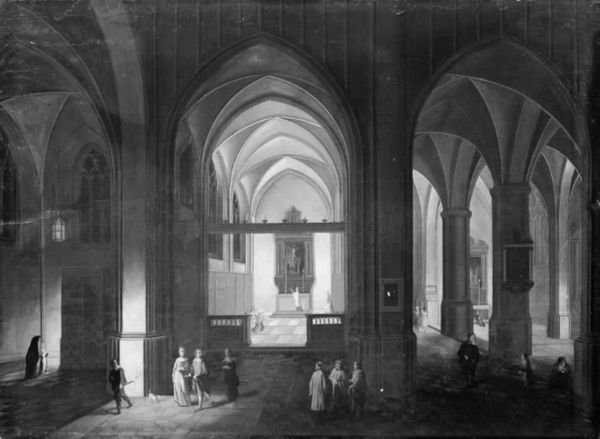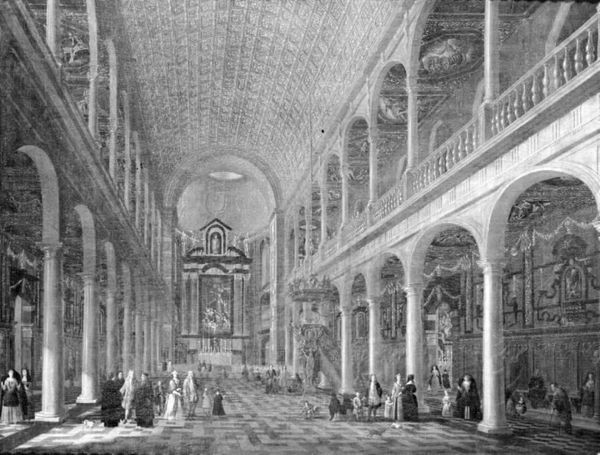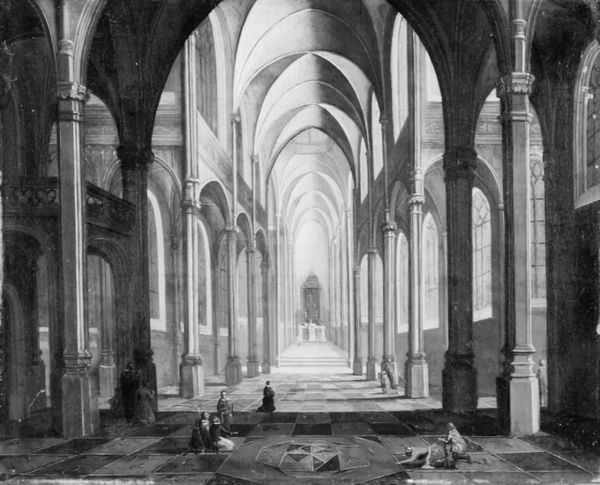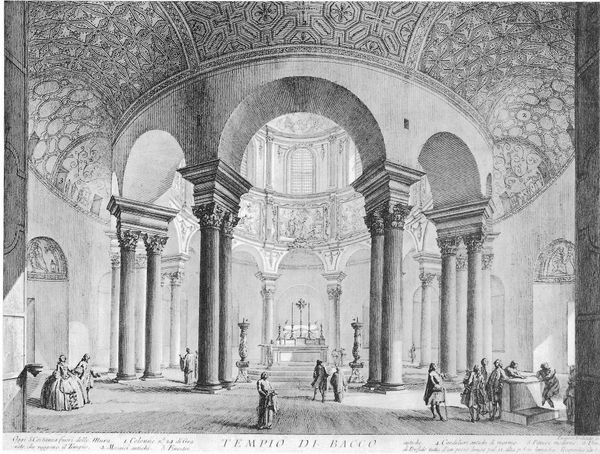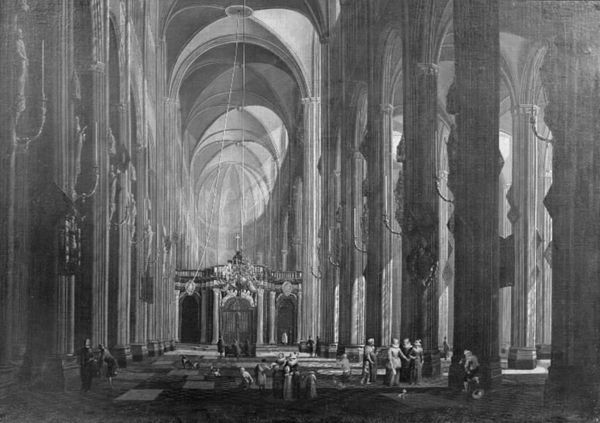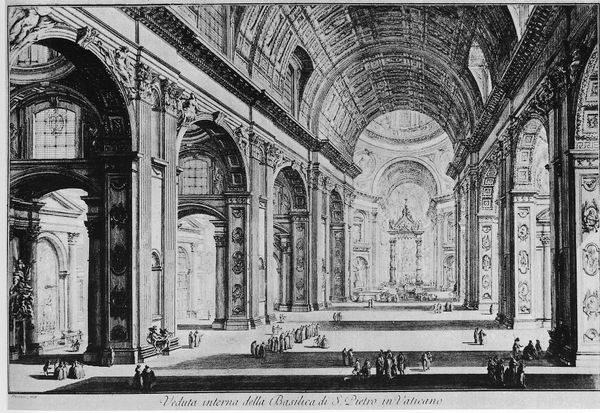
tempera, painting
#
medieval
#
baroque
#
tempera
#
painting
#
sculpture
#
perspective
#
chiaroscuro
#
genre-painting
#
history-painting
#
historical building
Dimensions: 26.4 cm (height) x 47.4 cm (width) (Netto)
Curator: Before us hangs "Baptism in a Church," created sometime between 1605 and 1656, and we believe it to be by Bartholomäus Miltwitz. Painted in tempera, it resides here at the SMK, Statens Museum for Kunst. Editor: My initial reaction is awe at the scale depicted. Even in monochrome, the light pouring through the Gothic windows evokes a profound sense of sacred space. The small figures almost get lost within the immensity. Curator: Scale and setting were often critical statements, both about institutional power but also about who it serves. Miltwitz presents this church not just as a physical structure, but as an arena for social performance. We might ask how inclusion and exclusion were architecturally and performatively rendered through the space. Editor: Indeed. Churches are filled with potent symbols—light representing divine grace, the cruciform layout referencing Christ's sacrifice. The baptism itself is a powerful ritual of cleansing and rebirth, but is this about the individuals or is it more symbolic than that? Curator: In viewing historical works such as this, it’s impossible to extract them from how religion was used during a period of great social inequity to disempower a majority through religious moralizing, particularly the female gender and lower classes. But on the other hand, you can appreciate it if the figures inside that church were gathered there with a message of equity and peace and tolerance to spread those values as well. Editor: And thinking more closely about this sacrament, there’s a certain symbolic weight to the specific imagery surrounding baptism: the water as both purifier and life-giver, the white garments representing innocence. Each aspect serves a distinct visual function, meant to elevate the ritual beyond mere event to something spiritually transformative. Curator: Examining those transformative aspects becomes more pointed, as you noted, when situating gender within those symbolisms of purity and cleansing rituals, and the implications it has had to control bodies through the ages. Editor: Miltwitz has given us much to reflect on here, wouldn't you agree? Curator: Absolutely. "Baptism in a Church" serves as a valuable reminder that understanding artwork must engage in broader contemporary conversations, especially those addressing power dynamics.
Comments
No comments
Be the first to comment and join the conversation on the ultimate creative platform.
